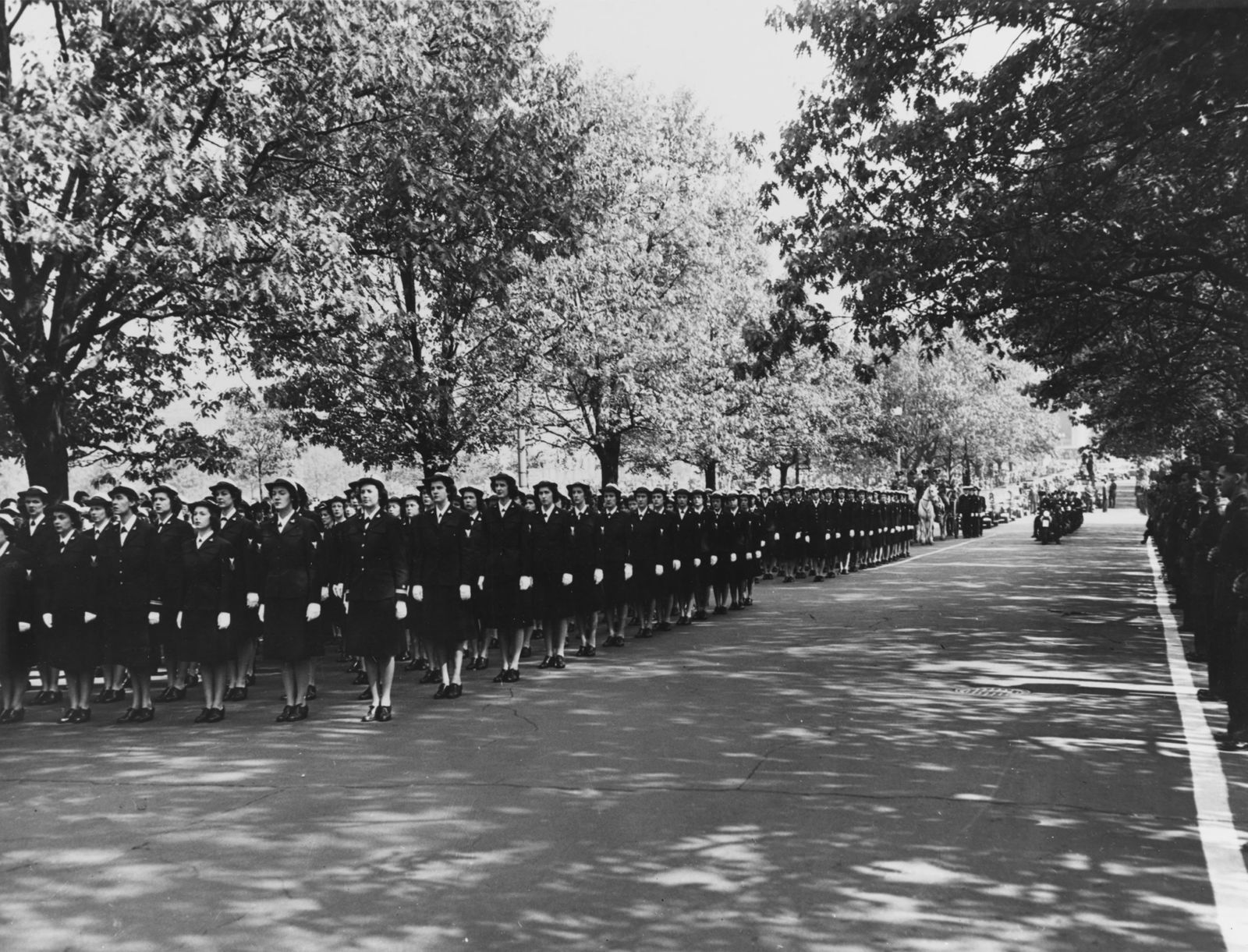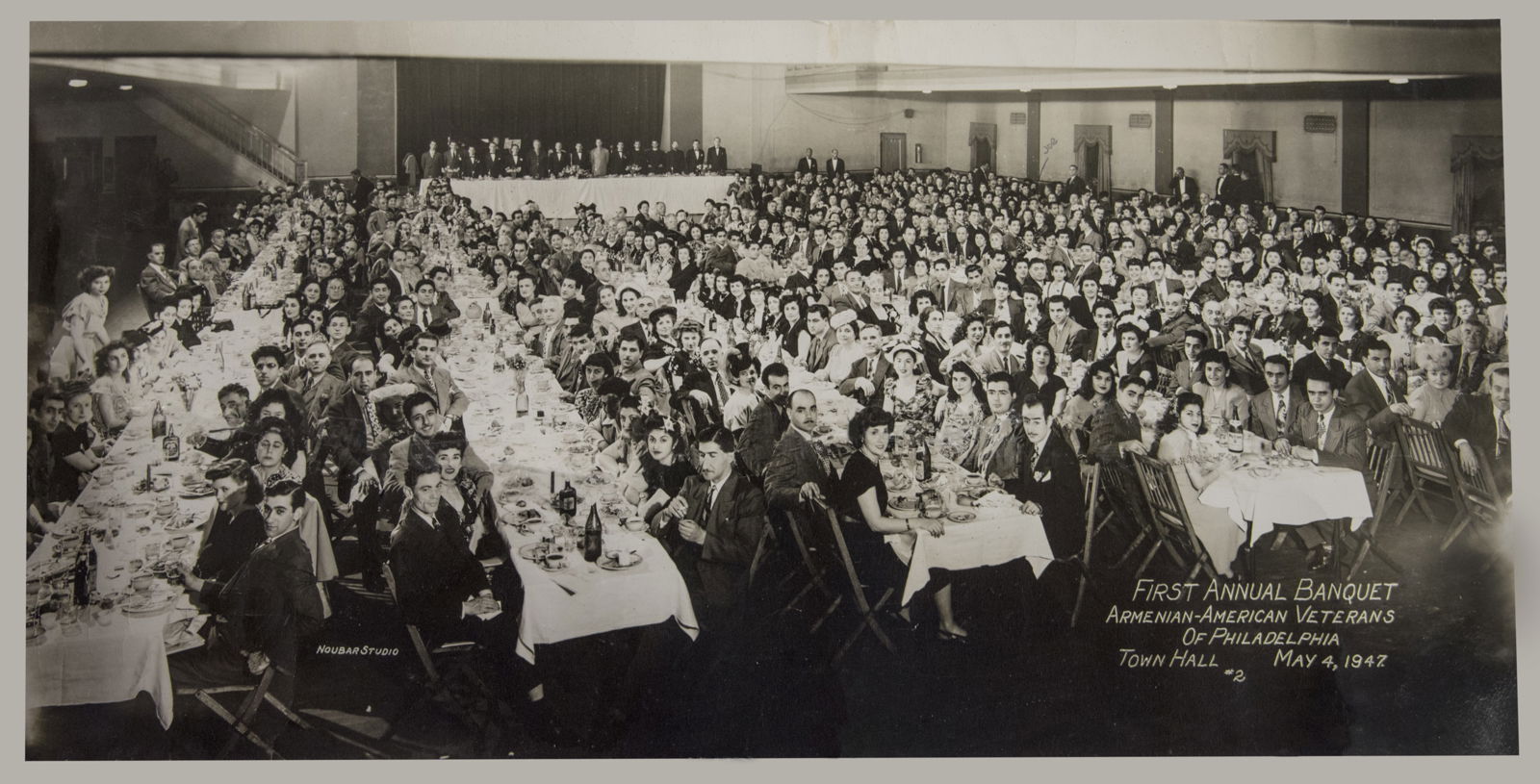As Women’s History Month draws to a close, it’s an appropriate time to bring attention to a national campaign which intersects with that of pioneering Armenian-Americans, specifically the American Rosie Movement. For more than a decade, the American Rosie Movement has been shining a spotlight on the unsung heroes who helped win World War II, embodied by the figure of Rosie the Riveter. By 1943, much of the young American male population was away fighting in Europe and Asia, creating a major gap in the workforce. At this time, jobs were seen through a gendered lens; a woman’s place was in the home, not in factories working with heavy machinery. Since the United States produced two-thirds of the Allies’ military equipment, gender norms were temporarily suspended as hundreds of thousands of women were recruited across the country to take up vital jobs in defense plants and shipyards to produce munitions, planes and all manner of war-related material. It cannot be overstated how crucial their hard work was to winning the war, and it should be no surprise Armenian-American women were among them.

The American Rosie Movement has declared 2022 the Year of the Rosie and has been searching for stories of their profound impact on history during the war. This has been a challenge because, unlike enlisted men, there aren’t comprehensive records of women who worked during the war. In fact, at the end of the war with the men returning, most “Rosies” were simply laid off from their jobs. They resumed their lives, and the 1950s which followed have come to be widely remembered as an era of domesticity and “happy homemakers”—a far cry from the spirit of female independence which Rosie the Riveter invokes. While their vital service to the war was mostly overlooked for decades, the legacy of these women has influenced today’s society and inspired advocates for women’s rights. The J. Howard Miller poster hung in Westinghouse defense factories of “Rosie” flexing a muscle would become an iconic image in the decades to come and remains a famous symbol of female empowerment.
One of those Westinghouse “Rosies” was Rose Basmajian Shelengian of Philadelphia—a true “Rosie” in every sense. A recent high school graduate, Shelengian put her college dreams on hold to find a job in order to help her father, a veteran of General Antranig’s army, and support the family. In 1943, she discovered a job posting for Westinghouse’s turbine division at a defense plant in Essington. The treasurer of her local Armenian Youth Federation (AYF) chapter, she would soon find herself in a totally foreign environment, a factory full of heavy machinery staffed mostly by young women. Just like most of them, she had no prior experience, but she quickly learned on the job how to read blueprints and operate the technical tools. The factory was very loud, full of dust and lacking air conditioning; in the summer, they took salt pills to avoid heat stroke. Her biggest challenge came when she was asked to operate a metalworking lathe to see if women could do it, which despite its frightening size and sounds, she did for the next month. Shelengian had to wear slacks and flats in the factory—the first time in her life she ever wore pants. She rather liked them and would continue to wear them at times after the war, even though skirts were still de rigueur for decades to come.

But breaking barriers didn’t come easily. Shelengian admitted she would feel somewhat embarrassed about her job because it was not considered women’s work at a time when social norms held a strong sway over society. She was the daughter of Armenian immigrants in a community that imposed strict values. The general consensus was that it was inappropriate for a young woman to do rough and dirty kinds of jobs like that, so she kept it a secret from all but her immediate family, in line with the slogan of the time, “loose lips sink ships.” And since secrecy was paramount, Shelengian was not even aware of how the parts she was making were used in the war effort, which contributed to the obscurity into which their service passed.

This began to change for Shelengian when in 2017 the Philadelphia Inquirer published an article about the American Rosie Movement and its search for those who had served. That year, Shelegenian was honored by Philadelphia’s mayor at an event at the Liberty Bell. She continued to educate others about her story and appeared on a 2019 podcast episode by KYW Newsradio In Depth. Unfortunately, Shelengian passed away during the COVID-19 pandemic in 2020—two days shy of her 96th birthday. While she was always humble about her role and said it was the least she could do with the boys fighting overseas (including her future husband and fellow Philadelphia Armenian Martin Shelengian), the Movement helped her gain a new appreciation about her important role in history. Through the efforts of Rosies like her, the nation has been coming around to discovering these inspiring stories and gaining a new appreciation for them. This was evidenced by a televised profile about Shelengian’s life, which aired on MSNBC’s Deadline: White House with Nicolle Wallace last year.
“Rose’s story is unique among the ones we have collected, as it is of a Rosie born to Armenian immigrant parents who escaped tyranny in their homeland to start a new life in America,” explained Anne Montague, founder of the American Rosie Movement. “It was here that Rose, like the children of thousands of survivors like her, would give back to their adopted nation by fighting tyranny during World War II. Rosies are important to America because they show us today how people can pull together to do the highest quality work for freedom.”
With the youngest surviving “Rosies” now in their mid-90s, there is great urgency to find those who remain and capture their stories. Between the secrecy of their job and their deference to the stories of combat veterans, Montague has found that “the Rosies themselves often don’t even know the importance of what they’ve done.” That’s why it’s so critical for Armenian-Americans to identify these women so their stories will not be forgotten. Even though most Rosies are no longer with us, it’s possible their relatives and the community’s collective memory can help identify them. Montague is also careful to point out that Rosies are not just limited to women who “riveted,” a term which refers to the joining together of metal plates done by Rosies to build planes, ships and tanks. “Rosies” have been expanded outside the confines of defense plants to include any woman who carried out vital work toward the war effort on the homefront, whether as clerks and secretaries within government bureaus or those who stepped up to run the family farm or business in order to maintain production at a time when the country was suffering from many shortages.
Women who were enlisted members of the military during the war are also deserving of more recognition. Though they were not yet permitted to assume positions on the battlefield, women took on critical military jobs and thus made room for more men to go fight. This was an initiative of the Women’s Army Corps (WAC) created in 1942.

Elizabeth Mardigian Sadjian was another Philadelphia Armenian and AYF member who answered the call and rose to the rank of sergeant. After a month of basic training, Sadjian was assigned as a clerk typist (office manager) within the purchasing and contract office of the supply division at Fort Detrick, Maryland. While the army leadership, in line with public opinion, was initially opposed to women serving in uniform, the shortage of men forced their hand. “WACs” suffered a slander campaign, becoming the targets of false gossip and ugly rumors due to their pioneering roles by a public which was not ready for their arrival. However, they rose above the criticism to become, as General Douglas MacArthur called them, “my best soldiers.”

Another Armenian with ties to Philadelphia was Mary Magarian Attarian, who volunteered to join the WAVES, the US Naval Reserve equivalent to the WAC. She served at the headquarters of the Potomac Naval Command in Washington, DC as a Yeoman Third Class. Upon the death of President Franklin Roosevelt, she had the honor of marching in his funeral procession alongside other WAVES.
One of the most prominent examples of an Armenian-American woman in World War II is Sue Sarafian Jehl of Detroit. Also a proud AYF member, Sarafian Jehl enlisted in the WAC and was appointed a primary secretary of Supreme Allied Commander General Dwight D. Eisenhower. In honor of Veterans Day in 2020, the Armenian Weekly’s John Dekhane published “Paving the Way,” Sarafian Jehl’s story of overcoming the odds and helping prove to a hostile public that women were more than capable of carrying out military roles.
In honor of her birth anniversary, Dekhane also profiled Anna Der-Vartanian, also of Detroit, who felt it was her duty to join the war effort. Enlisting alongside her brother and sister, she started out with the WAC and later transferred to the WAVES. Like these other women who chose to serve, she faced mockery and insults but wasn’t deterred, not just during the war but for decades to come. During her career, she would be posted in California and New Jersey, at Pearl Harbor, and abroad in Paris. In 1959, she became the first woman ever promoted to Master Chief Petty Officer (E-9), the Navy’s highest enlisted rate. After retiring from the Navy, she joined the CIA where she became a counterintelligence specialist. She retired from that role in 1991, but remained as a contractor until 2007 when she was in her mid-80s. Der-Vartanian was also buried at Arlington National Cemetery with full military honors.
Fortunately, there are other stories of enlisted Armenian women in World War II, including in Richard N. Demirjian’s books The Faces of Courage and Triumph and Glory: Armenian World War II Heroes. They include servicewomen who survived the sinking of ships and kamikaze attacks and served in numerous ways as military nurses in remote parts of the world like Papua New Guinea and as cryptographers deciphering enemy codes.

It cannot be overstated how these Armenian-American women, along with all the Rosies and enlisted women of World War II, have helped to shape the more equal (but still a work in progress) society we have today. Their accomplishments are a reminder of the adversities we have overcome as Armenian-Americans and what we are capable of. It also sends a message to the United States at large, which in various respects is still getting to know who Armenians are as a component of the “melting pot,” that we have been contributing to this country’s success for generations. We owe it to history to continue preserving the proud record of World War II Armenians, and that, like their parents’ stories of survival, it be another source of inspiration for our community and all Americans.




So proud of our Rosies. Especially proud that I knew a few of them Betty Sadjian, Rose Shelengian , & Mary Attarian. God Bless!!
God Bless our Armenian Rosies who have served our country, and will never be forgotten!!